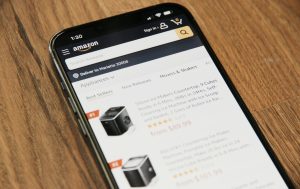To achieve your goals in social media marketing, it’s important that your advertisements reach the right people. When you advertise, it’s crucial that it reaches your target audience. Meta, through Facebook and Instagram, offers specific targeting options in Meta Ads. The term “Meta” refers to the company Meta, formerly known as Facebook. We use the terms Meta Ads or Facebook Ads interchangeably in this post.
You will learn about these three targeting options and how to create a new audience in your Ads Manager in this post.
Core Audiences: The Core Target Groups or Interest-Based Settings
With this setting, you can define the criteria that apply to your target audience yourself. These criteria can include location, demographic information such as age, gender, education level, or occupation, interests, consumer behavior, or connections.
Are you advertising for your restaurant in a specific city? Use the “Location” criterion to let users near your restaurant see your ads.
If your customers for skincare products are primarily women aged 20 to 30, you can display your Facebook Ads exclusively to this target audience.
Do you want to attract new customers to your gym? Exclude your current customers who are linked to your Facebook page from your Facebook Ads using the “Connections” criterion.
Do you sell clothing for fashion-conscious women? Target particularly fashion-forward women who are active on Facebook. Use the criteria “demographic information” and “interests” for this purpose.
To use the Core Audience, you need to know the exact characteristics of your target audience. With Facebook’s audience insights, you can identify the characteristics of Facebook users connected to your page.
Custom Audiences
Custom Audiences are a great option for reaching out to users who have shown a certain interest in your business. These include your loyal customers and people who have clicked on your website, signed up for your newsletter, or installed your app.
You can also create contact lists and then reconnect with your customers or contacts. These lists can come from your CRM system or your email lists, for example.
Meta Custom Audiences are a feature that businesses can use on the Meta platform (formerly Facebook) to target advertising to a specific group of people. Custom Audiences allow businesses to use their own customer data to create tailored audiences for their advertising campaigns.
To create a Meta Custom Audience, businesses can send their data through the Meta pixel on their website or upload their own customer data such as email addresses, phone numbers, or user IDs. Meta then matches this data with profiles on its platform and creates an audience consisting of matching users. This allows businesses to target their advertising messages specifically to their existing customers or prospects.
Meta Custom Audiences offer several benefits to businesses. They enable more precise targeting of advertising, as it can be directed to people who already have a connection to the company. This increases the likelihood that the advertising will be of interest and lead to desired actions such as purchases or sign-ups. Furthermore, using their own customer data provides better control over the audience and ensures that advertising spending is used more efficiently.
It is important to note that the use of customer data for Custom Audiences is subject to legal and privacy regulations. Businesses must ensure that they have the necessary consents from customers and comply with applicable data protection policies to use the data lawfully.
The exact features and requirements of Meta Custom Audiences may change over time as Meta constantly updates its platform. It is advisable to review Meta’s current policies and features to understand the precise use of Custom Audiences and ensure compliance with current regulations.
Lookalike Audiences
Lookalike Audiences, for example, find statistical twins of your former website visitors. Through Lookalike Audiences, you are connected with individuals who closely resemble your current customers in their characteristics and interests. This increases the likelihood that your ads will reach interested parties and potential new customers.
Meta Lookalike Audiences are audiences created based on similar characteristics and behaviors as an existing audience.
Creating Lookalike Audiences is a common marketing strategy where companies use an existing audience as a reference and then identify similar individuals who may potentially be interested in their products or services. This is typically achieved through analyzing data and attributes of the existing audience, such as demographic information, interests, behavioral patterns, and purchasing habits.
Meta Lookalike Audiences specifically rely on the data and information that Meta collects through its platforms such as Facebook, Instagram, and WhatsApp, or even through your website (if you use the Meta Pixel). Meta has extensive data about its users, including demographic information, interests, preferences, and activities. With this data, Meta can identify similar user groups and enable companies to target their marketing messages to these audiences.
Using Meta Lookalike Audiences allows companies to make their advertising campaigns more effective by directing their messages to individuals who already share similarities with their existing audience. This can lead to greater relevance of the ads and increase the likelihood that these individuals will become customers.
It is important to note that this is a general description and the exact workings and definition of Meta Lookalike Audiences may change over time, as platforms like Meta constantly update their features and privacy policies.
Meta or Facebook Pixel
The Meta Pixel (also known as Facebook Pixel) is a tracking code that companies can embed on their websites to capture user behavior and collect information for advertising purposes. The pixel enables Meta to track the behavior of website visitors and use this data for targeted advertising and measuring advertising effectiveness.
The functionality of the Meta Pixel can be broadly divided into four steps:
- Embedding the pixel code: The company receives a unique pixel code from Meta and embeds it on its website. The code consists of JavaScript and is placed in the header or footer of the website.
- Capturing user actions: Once the pixel is active on the website, it begins to capture specific user actions. These can include page views, clicks, conversions, sign-ups, or other actions occurring on the website.
- Sending data to Meta: Each time a visitor performs an action, the pixel triggers an HTTP request that sends the corresponding data to Meta. This can include information such as IP address, browser information, page content, and user activities.
- Using data for advertising purposes: Meta uses the collected data to serve personalized advertising. Based on user behavior, audiences can be created, and ads can be specifically targeted to individuals who have taken certain actions on the website. This enables targeted advertising and efficient spending allocation for businesses.
The Meta Pixel offers various benefits to companies, including the ability to understand user behavior on their website, optimize campaigns, and track conversions. It also enables the use of remarketing features, where targeted ads can be served to people who have already shown interest in the products or services.
It is important to note that the use of the Meta Pixel requires compliance with privacy regulations. Companies must ensure that they obtain user consent when collecting and using personal data for advertising purposes.
If you want to reach your website visitors with your advertising, create a Facebook Pixel. If you want to learn more about pixels, feel free to read our latest blog post on online marketing measurement.
If you want to target users who have installed your app, you should install the Facebook Software Development Kit (SDK). This is a helpful analytics tool that assists you in creating more relevant ads.
How to Create a New Target Audience
Before defining a new target audience, you should learn more about them by tracking user behavior. You can do this by setting up the Meta Pixel or Facebook Pixel on your website.
First, a new ad needs to be created in the Ads Manager. Click on the “Create” button and set your objective for the ad.
Currently, Meta automatically suggests the Advantage+ Audience. To switch to the original audience options and define your audience precisely, click the corresponding button at the bottom right of the field. A pop-up will ask if you really want to switch, where you should click “Use Original Audience.”
In the “Create New Audience” field, you can create a new Custom or Lookalike Audience. Under the “Location” section, you can select countries, counties, or individual cities on the map where the ad should be displayed. You can also specify a radius. Now you can decide whether only “People who live in this location” or visitors such as tourists should see your advertisement.
For the “Age and Gender” section, you can fill in based on your experience with your current customers. You can refer to Facebook Insights for your page to help with this.
In the “Interests and Circumstances” section, you need to have a good understanding of your customers. The “Detailed Targeting” button can help you discover these interests. You can also “Narrow Audience” to specify that all users who see this ad must have the characteristic you enter.
Finally, specify the language your target audience should speak and what connection they should have to your business. Should potential customers have used your app before, or should they be people who have liked your page?
Contact Us Now
To ensure the success of your Facebook ads, it’s crucial that they reach potential customers who are interested in your products or services. Your ads won’t be successful if they’re only seen by people who are not part of your target audience. To identify the relevant audience for you, you need to gather a lot of knowledge about your potential customers.
If you need assistance with creating your Facebook ads and defining your optimal target audience, we’re here to help. Schedule a meeting with us here! We look forward to hearing from you.





